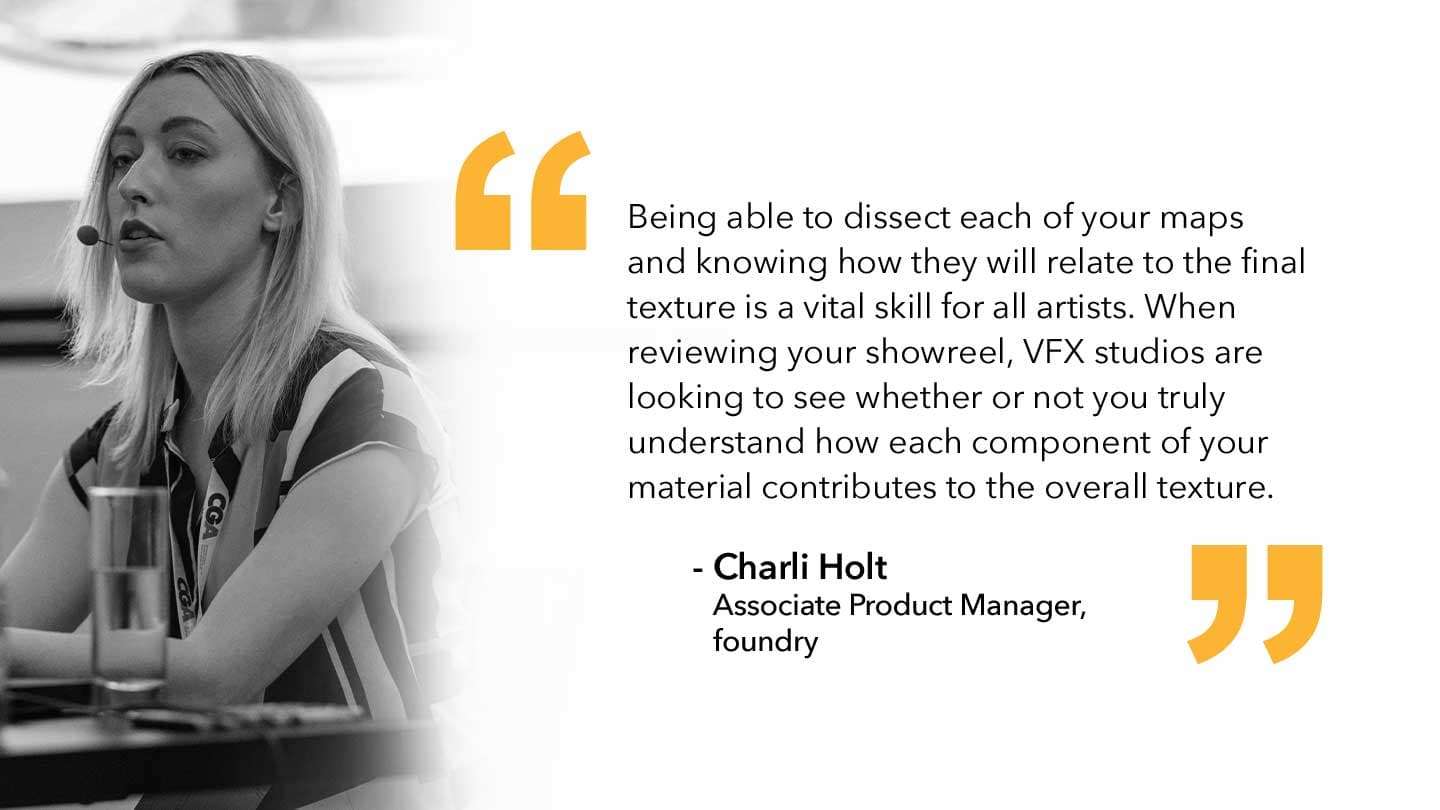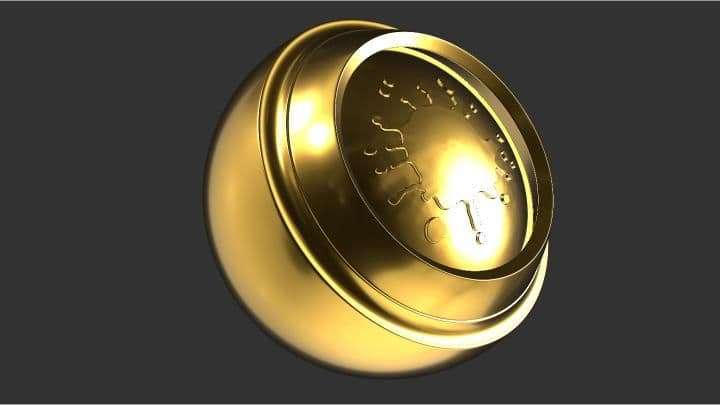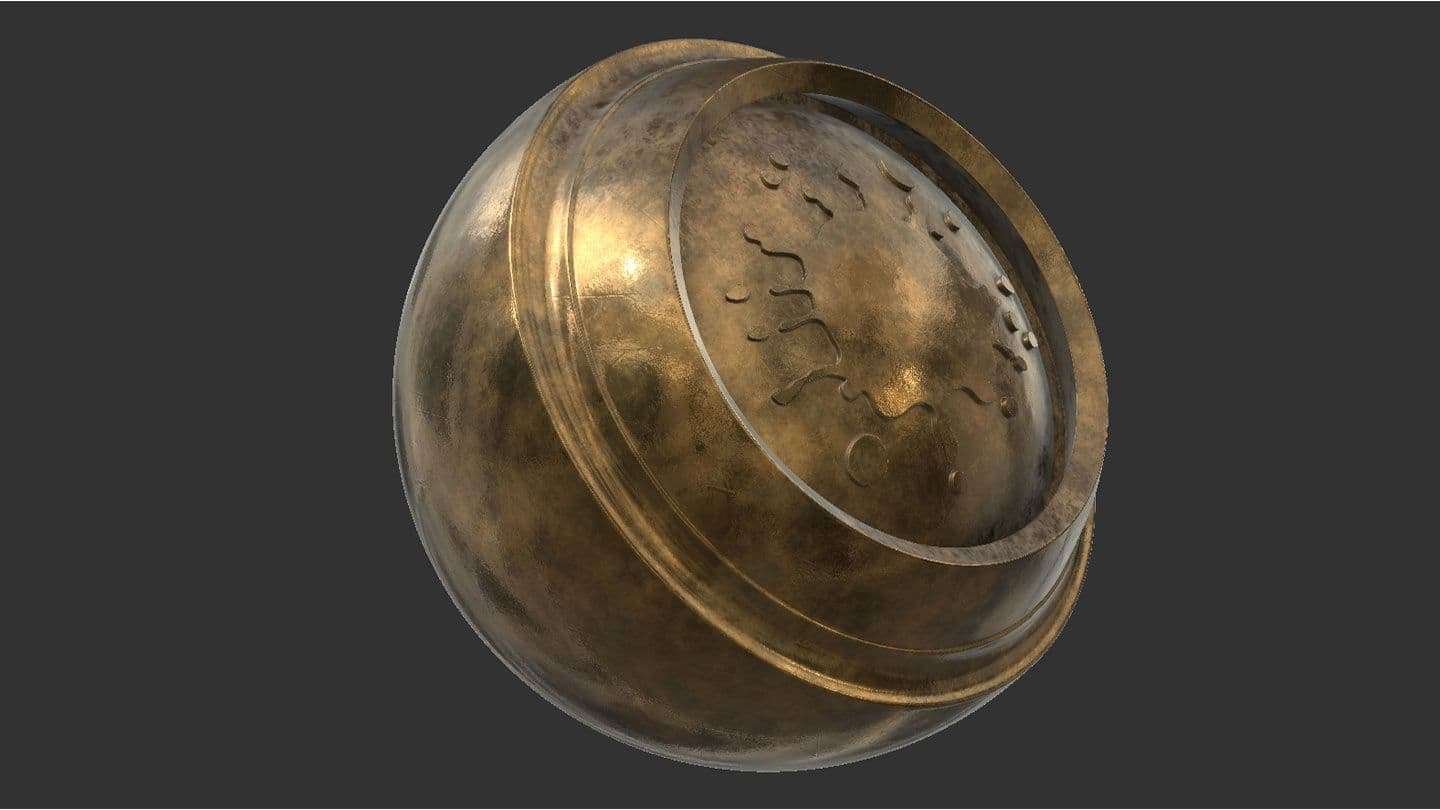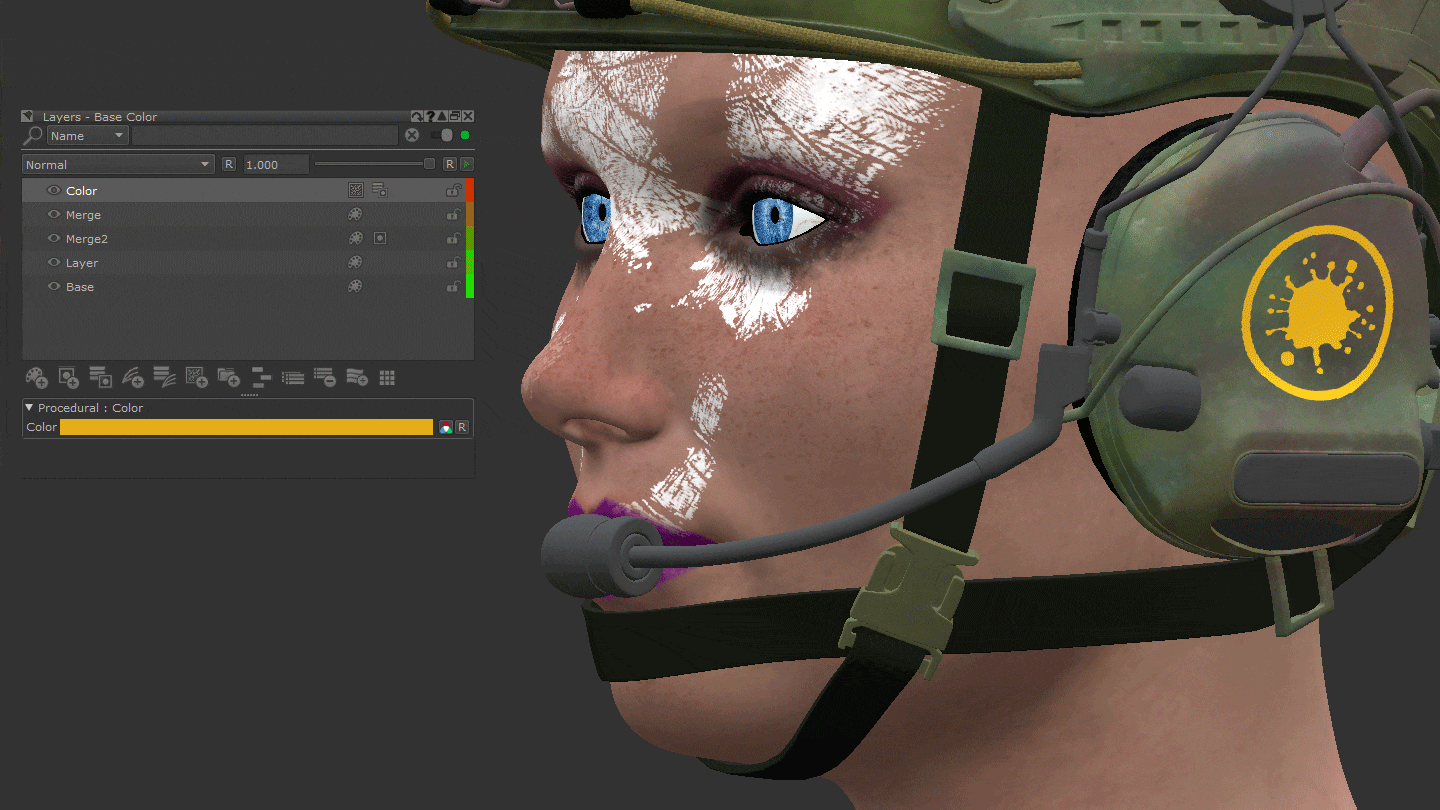
How to Stand out as a Texture Artist
The team at Foundry share how persevering with learning Mari can help broaden your understanding of the texturing process and stand out as a texture artist.
Texture Artists are world builders. They breathe life into CG creations, taking art direction and inspiration from real life to firmly set their assets within the realm of believability. They are a vital point of creativity in every VFX studio's pipeline.
It's no secret that Mari traditionally hasn't always been the easiest software to learn. Whilst we are working to change this by offering more and more educational content from both in-house and external artists on our Foundry Learn site, we know that sometimes it can be overwhelming when first opening Mari.
For some artists, that might be enough to look elsewhere, but in this article, Associate Product Manager at Foundry, Charli Holt, wants to explain how persevering with learning Mari can help broaden your understanding of the texturing process and help you skill up your workflow even as an experienced user.
One thing that Mari excels at teaching you is the importance of understanding texturing theory. Nothing is handed to you from the get-go. In Mari, you are required to break down these texture maps into individual Channels (or streams, if you’re a NodeGraph user) to use as building blocks for your project. So from the very beginning we are already starting to understand how each Channel relates to the look of the final material shader.

Being able to dissect each of your maps and knowing how they will relate to the final texture is a vital skill for all artists. When reviewing your showreel, VFX studios are looking to see whether or not you truly understand how each component of your material contributes to the overall texture. They want to see that you know how the imperfections in your microsurface maps distort the reflection of light to not only create a believable asset, but to capture the story behind that asset.
Sure, that metal gate is rusty, but why is the rust forming in that particular place? Perhaps the gate resides on farmland besides the sea so the salt from the air has started to accelerate the corrosion. Perhaps the farmer always places his hand on a certain point on the gate so the painted coating has started to wear down and dull. Once you start to look into the theory behind physically based textures you can start breaking down how your diffuse, metalness, specular and microsurface are really contributing to the texture.
I would encourage every aspiring texture artist to spend time learning and understanding the fundamentals behind physically-based texturing, and learning Mari can be a great way to get a head start on doing just that.
So why do we find it so difficult to make our showreel stand out in a sea of rusty metal fire hydrants and worn wooden floorboards?
We, as artists, are always looking for ways we can improve our efficiency and, in some cases, this can unfortunately make us lazy. Regardless of which tool you’re using for your projects, it’s very easy to fall into the habit of using pre-made materials for quicker results.
Unfortunately this means that we often find new artists coming into the industry rely heavily on these at times when they need to be showcasing their skills. Presets might be great for quickly building up your projects, but we’ve heard too often from VFX studios that they’re seeing the same presets used across showreels, to the point where they can name the exact preset you’ve used on your asset with just a glance.
If you’ve seen RustyMetal04 before, I guarantee the CG Supervisor looking at your showreel has seen it before too.


That’s not to say you should avoid using presets altogether—Mari ships with a number of material examples that are a great low-stress starting point for creating your own material projects. Take Gold_Metal, for example. As it is, it’s a physically accurate representation of how gold interacts with lighting. But that’s all it is. It has no specific details or defects that set it in place in a larger world context and that’s why it looks so irregular—you will never find a clean block of gold with no bump, scratches, fingerprints or smears in the real world. To make it a believable material, you’ll need to go in and add these details yourself using your final shader and your knowledge of how your maps contribute to it as a guide.
Mari’s material presets are intended to be used as a foundation for your own creativity so that you never fall into the trap of thinking that one person’s idea of how gold should look fits all scenarios.
Blend modes are something we often forget about when working with layers and nodes, though that’s not to say that we don’t use them. I know that as an artist I’ve been guilty of throwing in the odd Overlay layer simply because ‘it made the texture look cool!’ Whilst you’re probably not going to be called out on this from a showreel alone, in a studio environment you want to be as frugal and conservative with your layers as possible.
It is super easy to get lost with adding more and more layers of different Blend modes to get the effect you’re looking for and the reality is that you probably don’t need all of them to get there! Take the time to educate yourself on the mathematical operations that are being used behind the Blend modes and notice the areas where you might be able to replace chains of merge nodes with one single blend mode to get the same result. More often than not, they are universal for most applications, meaning that you’re instantly improving your value to any studio that wants to cut down projects containing thousands of nodes to just the bare necessities.

At the end of the day, it’s important to know that different studios use different applications and approaches to their texturing pipelines so what may work for one may not work for another. Your key take-away should be to realise that there is no one solution for all. By taking the time to familiarise yourself with how Mari encourages you to acknowledge the physical rules behind why texturing choices are made, you are developing transferable skills that will make you sought after in Industry.
Live and paint by the rule that if you don't know why you're doing something—don't do it. If you do know, well, get ready to explain it in your future interviews.
Originally published on Foundry.com